A proposal submitted by an international team, led by UNC-Chapel Hill Prof. Dan Reichart, has been selected to receive a $3M grant from the Department of Defense’s National Defense Education Program (NDEP).
Dr. Reichart directs “Skynet”, which is a globally distributed network of fully automated, or robotic, telescopes, developed by his team at UNC-Chapel Hill. Skynet currently numbers approximately twenty visible-light telescopes, spanning four continents and five countries, and one significantly larger radio telescope (pictured) at Green Bank Observatory in West Virginia.
Skynet is used by hundreds of professional astronomers, who publish Skynet-collected data in peer-reviewed journals every approximately twenty days. But it has also been used by approximately 40,000 students, of all ages.
This includes over 2,000 survey-level undergraduate students per year from nearly two dozen institutions across the US and Canada, who are using a curriculum called “Our Place In Space!”, or OPIS!. OPIS! was originally developed by Reichart for UNC-Chapel Hill’s ASTR 101 labs. It is now being adopted on a national scale, funded by over $2M from the National Science Foundation.
The Department of Defense (DoD) has now decided to fund a $3M expansion of Skynet, paired with the development of a follow-on curriculum to OPIS!.
Skynet will now integrate up to eight more radio telescopes into Skynet. These telescopes are located in the western mountains of North Carolina, Puerto Rico, and at two sites in Australia. They are comparable in size to Skynet’s 6-story, 150-ton, radio telescope in West Virginia. Radio telescopes look like giant satellite dishes, and are used to study the invisible universe. They are expensive to build, and are located in remote, radio-quite locations, so it is rare for students to gain access to them.
That said, this effort will fund approximately thirty educators to develop eight new observing experiences, collectively called “Astrophotography of the Multi-Wavelength Universe!”. These observing experience will use both Skynet’s visible-light telescopes and Skynet’s new radio telescopes to explore stars and galaxies, and to study light-emitting mechanisms. This curriculum will be integrated into second-semester, but still introductory, astronomy courses at OPIS!-adopting colleges and universities across the nation.
Skynet will also be working with Geneva Lake Astrophysics and STEAM (GLAS), based in Wisconsin, to make these curricula and observing experiences accessible for deaf/hard-of-hearing and low-vision students.
“Skynet” was named after the defense-funded computer program that became self-aware and started sending evil robots back in time in the popular Terminator movies. When asked about his real-life Skynet robotics program now also being DoD-funded, Reichart jokes “What’s the worst that can happen?”
Reichart continues, “But seriously, the plan is to use astronomy as a hook. The end goal is to develop a more competitive workforce, with the skills, knowledge, and experience that 21st-century employers like the DoD are looking for, and that our nation needs to thrive in the global economy.”
Participating institutions also include Furman University, Central Michigan University, the University of Tasmania, the Pisgah Astronomical Research Institute, Geneva Lake Astrophysics and STEAM, and Logos Consulting Group, LLC.


